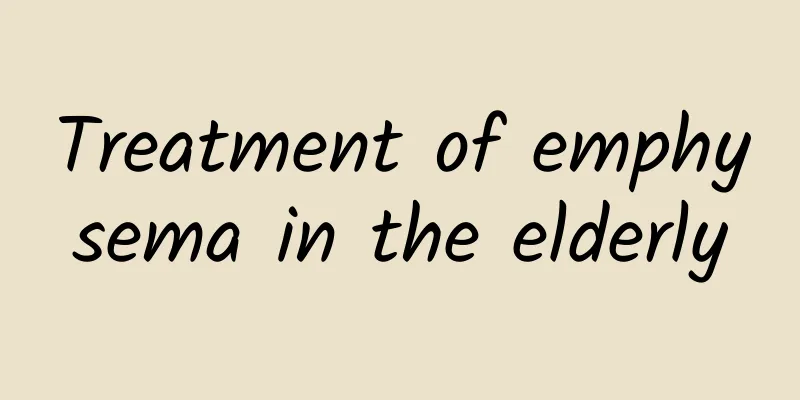What to do if you have double kidney crystals

|
Crystals in both kidneys are a precursor to kidney stones. If not treated actively, this symptom will worsen into kidney stones, causing great impact on physical health. There are many ways to treat bilateral kidney crystals, such as drinking plenty of water, adjusting diet, removing inducements, controlling infection, eliminating hematuria, etc. The specific treatment method needs to be determined according to the patient's condition. Here we will introduce the treatment method of bilateral kidney crystals.
1. General treatment (1) Drink plenty of water: Smaller stones may be pushed and flushed out by large amounts of urine. Increased urine flow can also help control infection. (2) Adjust diet: Diet composition should be determined according to the type of stones and urine acidity and alkalinity. Patients with calcium oxalate stones should avoid a high-oxalate diet and limit the intake of foods such as spinach, beets, tomatoes, nuts, cocoa, and chocolate. Calcium intake should be restricted for patients with idiopathic hypercalciuria. Eat a low-salt diet and control sodium intake. People with high uric acid should eat a low-purine diet, avoid eating animal offal, and eat less fish and coffee. (3) Eliminate the cause: For urinary stones caused by pathological factors, the primary disease should also be actively treated. Actively treat the causes of stone formation to prevent stone formation and recurrence. 2. Symptomatic treatment (1) Antispasmodic and analgesic: M-type cholecystokinin receptor blockers can relax ureteral smooth muscles and relieve spasms. Intramuscular injection of progesterone can inhibit the contraction of smooth muscle and relieve spasm, and has a certain effect on pain relief and stone removal; the calcium channel blocker nifedipine has a certain effect on relieving renal colic; alpha receptor blockers have a certain effect in relieving ureteral smooth muscle spasm and treating renal colic. (2) Control infection: Urinary tract obstruction caused by stones is prone to infection. Magnesium ammonium phosphate stones often form in infected urine. This vicious cycle makes the condition worse. In addition to actively removing stones to relieve obstruction, antibiotics should be used to control or prevent urinary tract infections. (3) Eliminate hematuria: Hydroxybenzylamine or tranexamic acid can be used when there is obvious macroscopic hematuria. 3. Treatment according to different components and causes (1) Hypercalciuria ① Primary hypercalciuria: Thiazides and potassium citrate can be used. For absorptive hypercalciuria, in addition to thiazides and potassium citrate, patients who cannot tolerate these drugs need to use sodium cellulose phosphate, and those with hypophosphatemia need to use orthophosphate instead. ② Hypercalcemia: Actively treat accompanying diseases. When hypercalcemia crisis occurs, emergency treatment is required. First, use normal saline to expand the volume as quickly as possible, and use loop diuretics such as furosemide to increase urinary calcium excretion; bisphosphonates are the main drugs for treating hypercalcemia, which can effectively inhibit osteoclast activity and reduce bone reabsorption. (2) Renal tubular acidosis Alkaline drugs are mainly used to slow down stone growth and new stone formation and correct metabolic disorders. (3) Hyperoxaluria Primary hyperoxaluria is difficult to treat. You can try vitamin B6, starting with a small dose and increasing the dose as the effect decreases. At the same time, drink plenty of water and limit foods rich in oxalic acid to reduce the oxalic acid level in urine to normal. (4) Hyperuricemia Low-purine foods and drinking plenty of water can reduce the concentration of uric acid in urine. (5) Homocystinuria Appropriately restrict protein diet and use cystine-lowering thiol drugs for treatment. (6) Infection stone The stones will be removed according to the patient's condition, and appropriate antibiotics will be selected to control urinary tract infection. 4. Surgical treatment When pain cannot be relieved by medication or the stone is large in diameter, surgical treatment should be considered. These include: ① Extracorporeal shock wave lithotripsy (ESWL) treatment. ② Placement of a stent in the ureter can also be combined with ESWL treatment. ③ Ureteroscopic lithotripsy. ④Percutaneous nephrolithotomy. ⑤Laparoscopic lithotomy. 5. Emergency treatment Renal colic and infection should be treated promptly. Antibiotics should be used promptly for infection, and renal puncture and drainage can be performed if necessary. Renal colic can be treated with anticholine, progesterone, and calcium channel blockers. If necessary, pethidine can be injected for analgesia. For patients with bilateral ureteral stones and obstruction and anuria, immediate surgical stone removal may be considered. |
<<: What does double kidney crystals mean?
>>: What happens if you eat too much lipstick?
Recommend
Foods that grow the fetus but not the flesh
During pregnancy, pregnant women will not only pa...
How to treat gastrointestinal disorders?
Gastrointestinal dysfunction is one of the sympto...
What is eye astigmatism?
Myopia is a very common eye disease. It should be...
Guidelines for the diagnosis and treatment of hand, foot and mouth disease
Hand, foot and mouth disease is a disease that mo...
Baby has diarrhea after drinking probiotics
The baby's gastrointestinal system is in a ve...
Calcium gluconate for urticaria
Many people may not know the medicinal value of c...
5 Ways to Increase Testosterone
Testosterone is a very important hormone for men,...
How to perform dialysis treatment for uremia?
Uremia is a kidney disease in the human body. If ...
What causes intermittent pain on the right side of the head?
Headache is a very common physical disease in dai...
Safflower oil for sexual enhancement
The main effect of safflower oil is to treat brui...
Can chronic prostatitis be cured?
Nowadays, the number of people suffering from chr...
The difference between raw silver and processed silver
I don't know if you know that silver is also ...
Mitral Stenosis
Rheumatic fever is the most common clinical cause...
Something big happened! After the gym, I took a shower and it turned out like this
After sweating profusely after working out, takin...
Get first aid tips for skin allergies in one minute!
When going out for fun, everyone must take good c...









